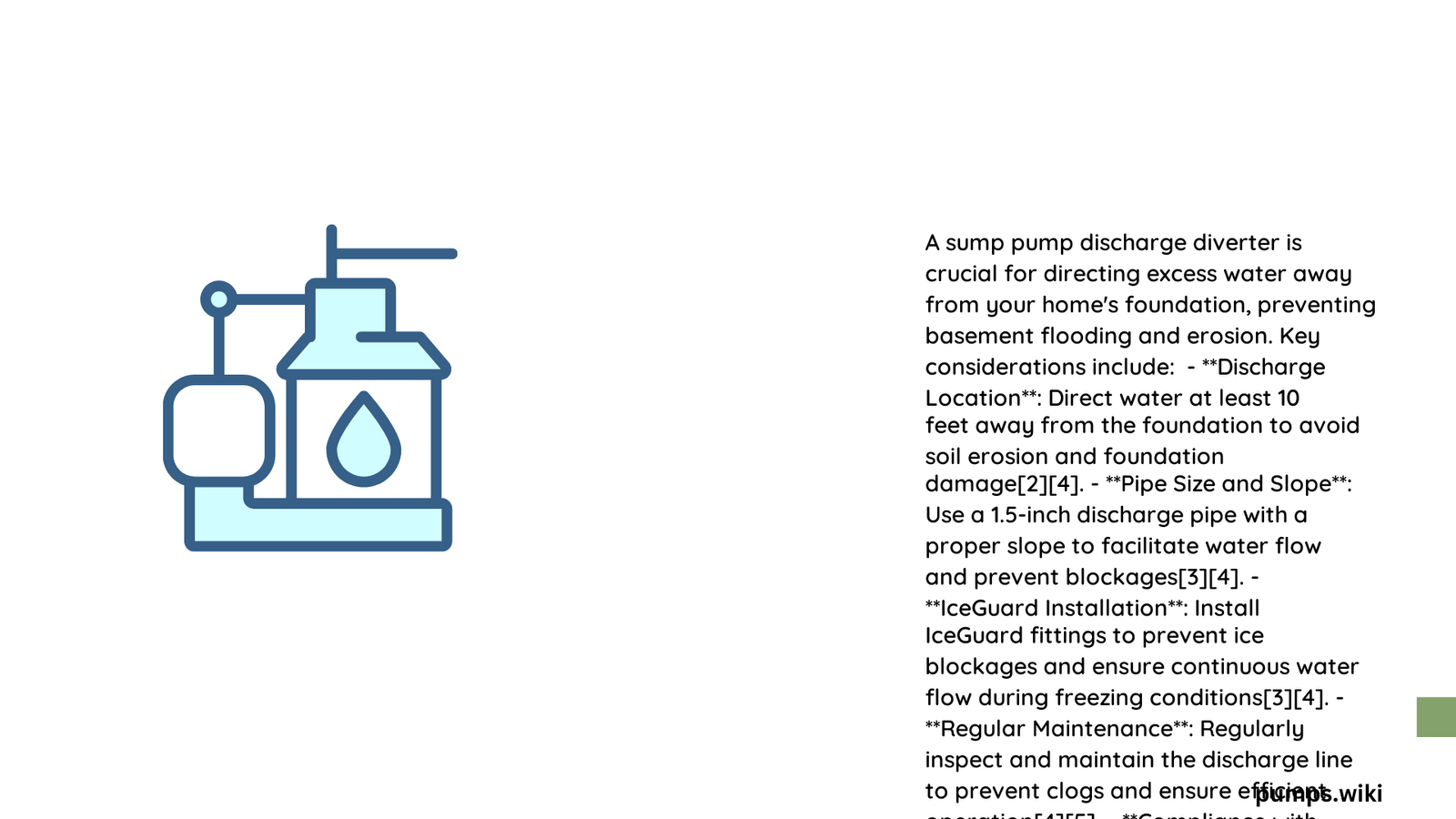A sump pump discharge diverter is a critical component in managing water drainage from your basement, preventing potential water damage and foundation issues. This comprehensive guide explores the intricate details of selecting, installing, and maintaining an effective discharge system that protects your home from moisture-related challenges.
What Makes a Sump Pump Discharge Diverter Essential?
Sump pump discharge diverters play a crucial role in redirecting water away from your home’s foundation, preventing potential water damage and structural complications. Understanding their functionality and proper installation can save homeowners significant repair costs and protect their property’s integrity.
Why Do Homeowners Need a Discharge Diverter?
| Problem | Consequence | Solution |
|---|---|---|
| Water Accumulation | Foundation Damage | Proper Discharge Diversion |
| Basement Flooding | Structural Risks | Strategic Water Redirection |
| Poor Drainage | Moisture Intrusion | Efficient Discharge System |
Key Components of an Effective Discharge System
- Pipe Material Selection
- PVC pipes (recommended for durability)
- 1.5″ inside diameter standard size
-
Long-lasting and corrosion-resistant
-
Installation Considerations
- Minimum 3-5 feet distance from foundation
- Downward slope for gravity-assisted drainage
- Secure connections with appropriate fittings
How to Choose the Right Discharge Diverter?
When selecting a sump pump discharge diverter, consider these critical factors:
- Material Durability: Choose UV-resistant and weather-tolerant materials
- Flow Capacity: Match diverter specifications with pump output
- Climate Adaptability: Consider local temperature and precipitation patterns
Recommended Installation Techniques
- Use long sweep 90-degree elbows to minimize friction loss
- Install a reliable check valve to prevent backflow
- Create proper exit points with protective screens
- Ensure adequate pipe slope for efficient water movement
What Are Common Discharge Diverter Challenges?
Homeowners might encounter several challenges during discharge diverter implementation:
- Freezing Risks: Install IceGuard or similar anti-freeze devices
- Clogging Prevention: Use high-quality screens at exit points
- Terrain Adaptation: Customize discharge route based on yard topography
Cost Considerations
| Component | Price Range |
|---|---|
| PVC Pipe | $1 – $5 per foot |
| Fittings | $5 – $20 each |
| Check Valve | $20 – $50 |
| Professional Installation | $100 – $500 |
How to Maintain Your Discharge Diverter?
- Regular visual inspections
- Clear debris from exit screens
- Check for potential pipe damage
- Verify proper water flow direction
- Assess slope and drainage efficiency
Expert Recommendations

Professional waterproofing experts consistently emphasize the importance of a well-designed sump pump discharge diverter. Proper installation and maintenance can prevent costly water damage and preserve your home’s structural integrity.
Final Thoughts
Investing time and resources in a high-quality sump pump discharge diverter is crucial for long-term home protection. By understanding its functionality and implementing best practices, homeowners can effectively manage water drainage and safeguard their property.
